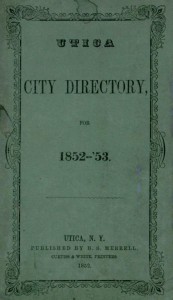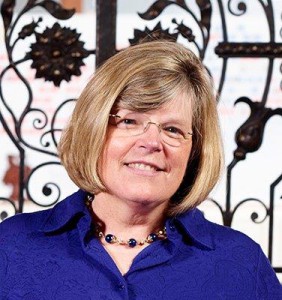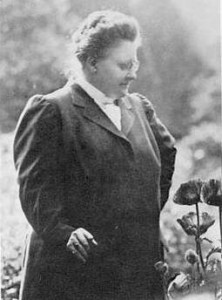 For the past several years NEHGS has been giving seminars on writing and publishing a family history. These have been very popular, and as a result, Penny Stratton and I refocused the two previous NEHGS writing guides to reflect the contents of the seminars. The resulting book is the Guide to Genealogical Writing: How to Write and Publish Your Family History (Boston: NEHGS, 2014), just released. In twelve chapters this Guide covers everything from preparing a short informal booklet up to publishing an elaborate compiled genealogy. Chapters on writing for the Register and for American Ancestors were adapted from the two previous guides. To help readers visualize some of our specific examples, we included plenty of illustrations, most of them from recently published Newbury Street Press books. Continue reading Further thoughts on genealogical writing
For the past several years NEHGS has been giving seminars on writing and publishing a family history. These have been very popular, and as a result, Penny Stratton and I refocused the two previous NEHGS writing guides to reflect the contents of the seminars. The resulting book is the Guide to Genealogical Writing: How to Write and Publish Your Family History (Boston: NEHGS, 2014), just released. In twelve chapters this Guide covers everything from preparing a short informal booklet up to publishing an elaborate compiled genealogy. Chapters on writing for the Register and for American Ancestors were adapted from the two previous guides. To help readers visualize some of our specific examples, we included plenty of illustrations, most of them from recently published Newbury Street Press books. Continue reading Further thoughts on genealogical writing
Monthly Archives: September 2014
Remember the ladies!
 Readers have asked for Early New England Families Study Project sketches for the ladies. Because genealogy is traditionally oriented to the male surname – and if a wife has only one husband – “reversing” his sketch for her would not include any more information. With 35,000 sketches to do, that is unneeded redundancy.
Readers have asked for Early New England Families Study Project sketches for the ladies. Because genealogy is traditionally oriented to the male surname – and if a wife has only one husband – “reversing” his sketch for her would not include any more information. With 35,000 sketches to do, that is unneeded redundancy.
However, there are exceptions to every rule. In the cases where a woman has married more than one husband and has children by both (or more), then her sketch will contain different information from her husbands’ sketches. Thus to completely cover a family, sketches are needed for the husbands and the wives who connect them. Three new sketches have been posted on the website for three of these wives and a fourth is in progress. It is quite interesting what a change of view can do for our understanding of what it was like to be a wife and mother in seventeenth-century New England. Continue reading Remember the ladies!
Gravestones and name changes
 Anyone who has researched genealogy knows that names can be spelled many different ways across a variety of records. I once found twelve different spellings of one family’s surname during a research project here at NEHGS. Recently, in my own personal family research, I’ve realized that another problem can occur when names are shortened across the generations. Continue reading Gravestones and name changes
Anyone who has researched genealogy knows that names can be spelled many different ways across a variety of records. I once found twelve different spellings of one family’s surname during a research project here at NEHGS. Recently, in my own personal family research, I’ve realized that another problem can occur when names are shortened across the generations. Continue reading Gravestones and name changes
Serendipity in genealogy
 There is much serendipity in genealogy: more than once I have pulled a book off the shelf in the library at NEHGS, intrigued by the title or perhaps the binding, only to find within its covers the answer to a vexing research question or a story that sheds light on a forgotten family member. One such volume is H.U. Memoirs, published in Boston in 1886, the earliest Harvard class book – not including the Sibley’s Harvard Graduates volumes – on the Society’s open shelves. In it I found a charming short biography of my great-great-great-great-uncle George James Foster (1810–1876), written by his niece Caroline Healey Dall. Continue reading Serendipity in genealogy
There is much serendipity in genealogy: more than once I have pulled a book off the shelf in the library at NEHGS, intrigued by the title or perhaps the binding, only to find within its covers the answer to a vexing research question or a story that sheds light on a forgotten family member. One such volume is H.U. Memoirs, published in Boston in 1886, the earliest Harvard class book – not including the Sibley’s Harvard Graduates volumes – on the Society’s open shelves. In it I found a charming short biography of my great-great-great-great-uncle George James Foster (1810–1876), written by his niece Caroline Healey Dall. Continue reading Serendipity in genealogy
“Dam humbug”!

Among my husband’s family papers is a letter, dated 25 October 1873, from John Dill to his mother, Susan (Berry) (Dill) Gibbons. John had left the family home in Springfield, Illinois, earlier that year to work on the railroad in Texas, and he was alarmed about the impending marriage of his younger sister, Ida Dill:
This thing of Ida getting acquainted Courting and marrying all in about a month I do not believe in and more than it is a dam humbug. . . . How do you know what that fellow is or has bin you cant find out so much in such a little time. Continue reading “Dam humbug”!
Cause of death: a genealogical clue

No document is more pivotal to genealogical work than a death certificate. The reason for its importance goes far beyond simply providing researchers with a date of death for an individual. Perhaps just as critical to understanding family history as the date of death is the cause of death.
Records of deaths were originally kept by churches in the colonial period, but eventually these records led to the development of legal documents which served a similar purpose. The Massachusetts Bay Colony made courts responsible for death records in 1639, going against the traditional European model of having churches record deaths as well as baptisms and marriages. Continue reading Cause of death: a genealogical clue
Cheat Sheets: Part Four
 The first fourteen steps in my process for creating entries for the Early New England Families Study Project are covered in three previous posts, beginning here:
The first fourteen steps in my process for creating entries for the Early New England Families Study Project are covered in three previous posts, beginning here:
15. Analysis. Many, many books have been written about genealogical analysis. I have just read the most recent, Bob Anderson’s Elements of Genealogical Analysis, and highly recommend it with one caveat – it is written by a left-brained genealogist. Speaking as a right-brained genealogist, I know some readers may find themselves grumbling about “overkill,” but remember that Bob is examining the process of genealogical analysis on the cellular level. Continue reading Cheat Sheets: Part Four
More than just names and addresses
 In my role as a technical services librarian at NEHGS, one of my regular activities is selecting books from our research library for digitization, and in recent months I’ve been focusing on some of the nineteenth century city directories from our rare books collection. City directories can have great research value: in addition to pinpointing the exact years that an ancestor inhabited a particular place, they often provide data about occupation and employers, and can be an especially good resource for locating information about individuals who may have been renters or temporary residents. Continue reading More than just names and addresses
In my role as a technical services librarian at NEHGS, one of my regular activities is selecting books from our research library for digitization, and in recent months I’ve been focusing on some of the nineteenth century city directories from our rare books collection. City directories can have great research value: in addition to pinpointing the exact years that an ancestor inhabited a particular place, they often provide data about occupation and employers, and can be an especially good resource for locating information about individuals who may have been renters or temporary residents. Continue reading More than just names and addresses
Genealogical complexity: writing it up
 Yesterday, Scott wrote about genealogical complexity: addressing all the different ways we make modern families and write about them genealogically. As it turns out, many family historians ask questions about just such things:
Yesterday, Scott wrote about genealogical complexity: addressing all the different ways we make modern families and write about them genealogically. As it turns out, many family historians ask questions about just such things:
- How do I talk about a child born out of wedlock?
- Do I list my sister’s stepchildren?
As Scott said, we think you should report it all – without judgment. Well, what does that look like? The first place a child appears in a Register-style sketch is in a child list, and it’s the child-intro line where you give the salient information. Here are some examples: Continue reading Genealogical complexity: writing it up
Genealogical complexities

When I started out as a genealogical writer, I followed the model of genealogies published earlier in the twentieth century. The genealogical world they depicted was an orderly one, with generation after generation born in one place, married in another, and buried in a third. The greatest dramas I faced in writing my first book (The Sarsaparilla Kings, published in 1993) concerned cousins who deplored the information I had uncovered on their brief first or second marriages, information they were reluctant to see in print. Continue reading Genealogical complexities